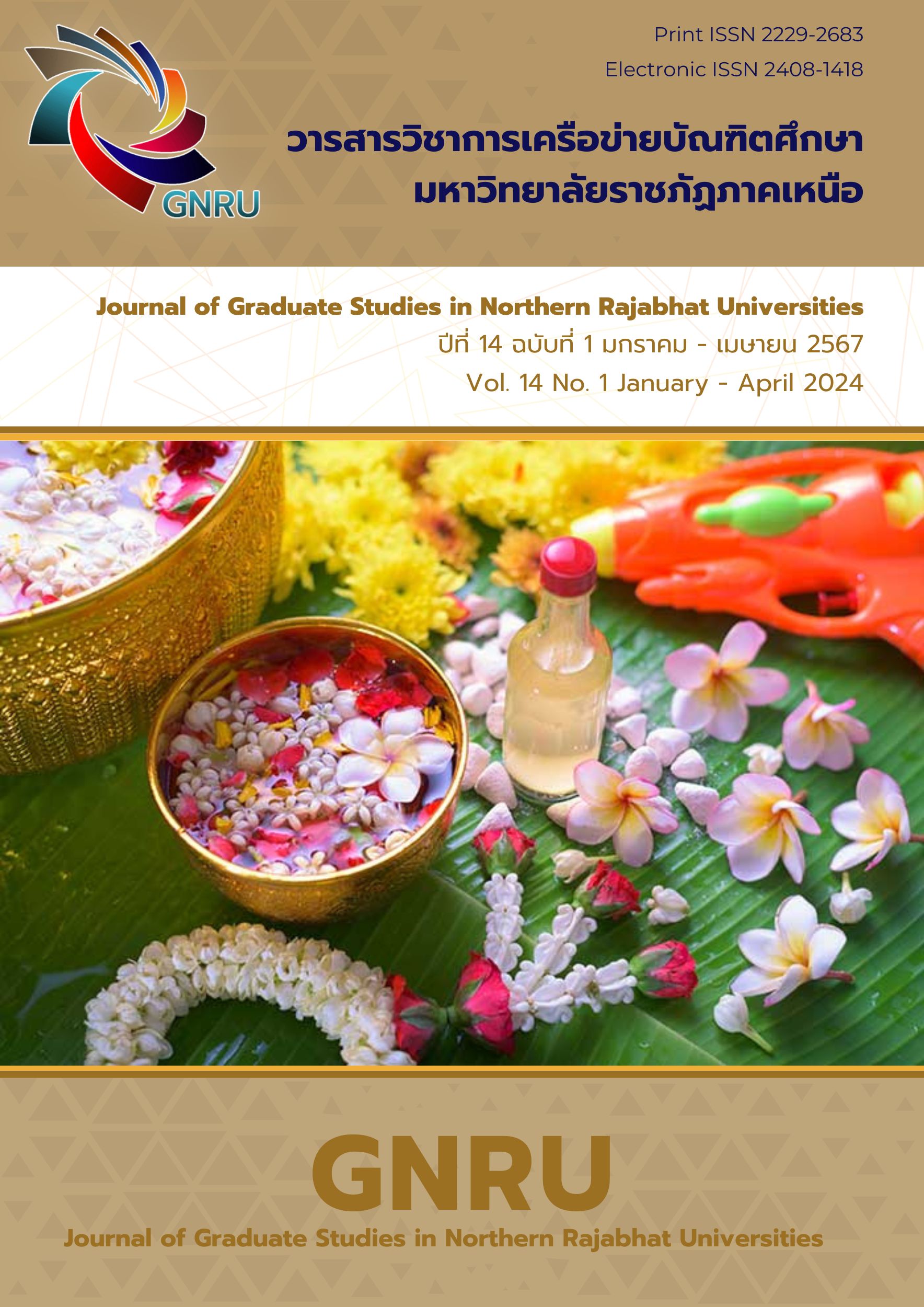7 THE RESULTS OF USING INNOVATIVE ART LEARNING BOXES TO PROMOTE ARTISTIC CREATIVITY SKILLS FROM WASTE MATERIALS OF ELEMENTARY SCHOOL STUDENTS
Main Article Content
Abstract
This research aims to study the artistic creativity skills using recycled materials through the innovative art learning boxes, and to study the satisfaction of primary school students and teachers using the innovative art learning boxes. The sample consisted of 26 students from Grades 1 to Grade 3 at Makhamaen School in Ratchaburi Province and 2 teachers, selected by purposive sampling. The research tools included innovative art learning boxes from recycled materials, an assessment form for artistic creativity skills using recycled materials, a satisfaction assessment form, and a group discussion recording form. The data were analyzed by using mean and standard deviation. The research findings indicated that the students’ creative skills were at a very good level, with the highest mean on confidence in work, creating work according to the problem, and the selection of a variety of media materials, respectively. Also, the overall satisfaction of students and teachers with the art learning box innovation was at a high level. From the group discussion, students could practice using their creativity with a variety of materials, and they could help and share things with friends.
Article Details
References
Bloom, B.S. (1971). Taxonomy of Educational Objective Handbook 1. Summative Evaluation of student Learning. NewYork: McGraw-Hill.
Chiang Mai Rajabhat University. (2020). Designing and creating media and innovations for use in knowledge transfer. Retrieved from https://gened2.cmru.ac.th/ge_learning/src/gen1302/GEN1302-C5.pdf
Chaiyasen, C. (2020). Suranaree University Of Technology 21 st Century Skills Assessment Academic 2019. [Institutional research report]. Suranaree University of Technology.
Egana-delSol, P. (2023). The impacts of a high-school art-based program on academic achievements, creativity, and creative behaviors. npj Science of Learning, 8(39), 1-17.
Guilford, J. P. (1967). The Nature of human intelligence. New York: McGraw-Hill.
Hughes, T. (1987). The Evolution of Large Technological System. In W. Bijker, T. Hughes, & T. Pinch (Eds.), The Social Construction of Technological Systems. MIT Press. Retrieved from https://bibliothek.wzb.eu/pdf/1986/p86-9.pdf
Office of the Basic Education Commission Ministry of Education. (2009). Indicators and core learning content. Art learning group According to the Basic Education Core Curriculum 2008. Retrieved from https://www.act.ac.th/document/curriculum/6.pdf
Padan, R. (2014). Fine moter ability of early childhood children enhancing patching and tearing creative art activity. [Master of Education]. Srinakarinwirot University.
Pakkhothanang, K. & Rachwijit, J. (2015). The result of learning art activities by using teaching promoting creativity for mattayom 1. Journal of Education Graduate Studies Research. 9(4), 28-35.
Pantuworakul, K. (2020). An Organizing Creative Art Made from Wasted Material Activities to Enhance Kindergarteners’ Social Skills. Journal of Educational Studies, 14(1), 130-145.
Suwan, S. & Songserm, U. (2022). The Development of Art- Based Learning to Enhance Creative Thinking of Secondary Students. Academic Journal of Phetchaburi Rajabhat University, 13(1), 91-100.
The Ministry of Education. (2008). Basic Education Core Curriculum B.E. 2551 (A.D. 2008). Retrieved from http://academic.obec.go.th/images/document/1559878925_d_1.pdf
Wongyai, W. & Phatphon, M. (2021). Creative Learning. Bangkok: Charansanitwong Printing Company Limited.


